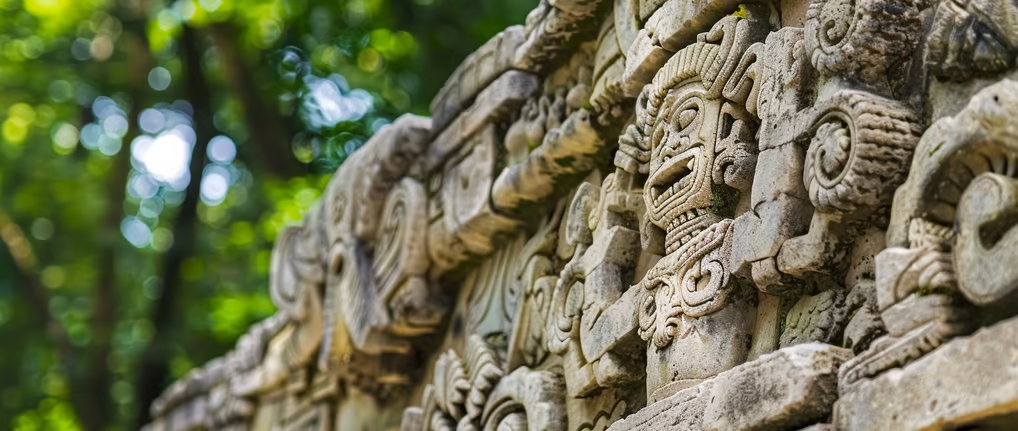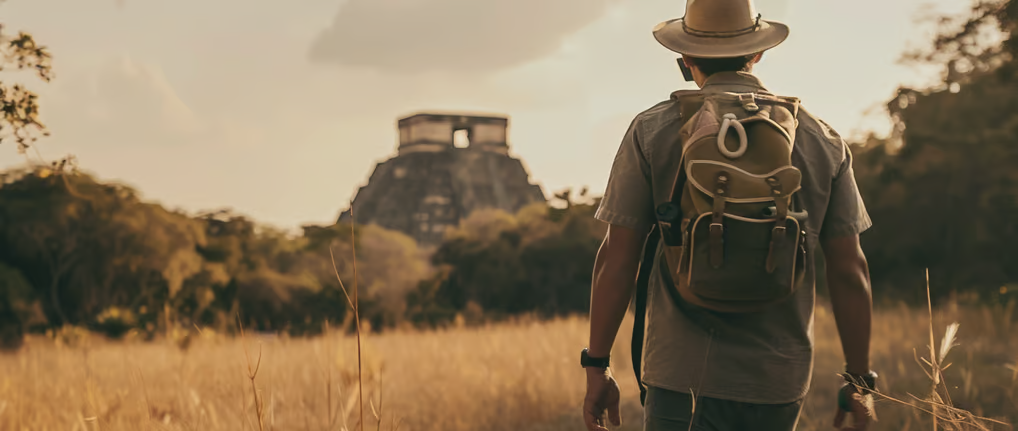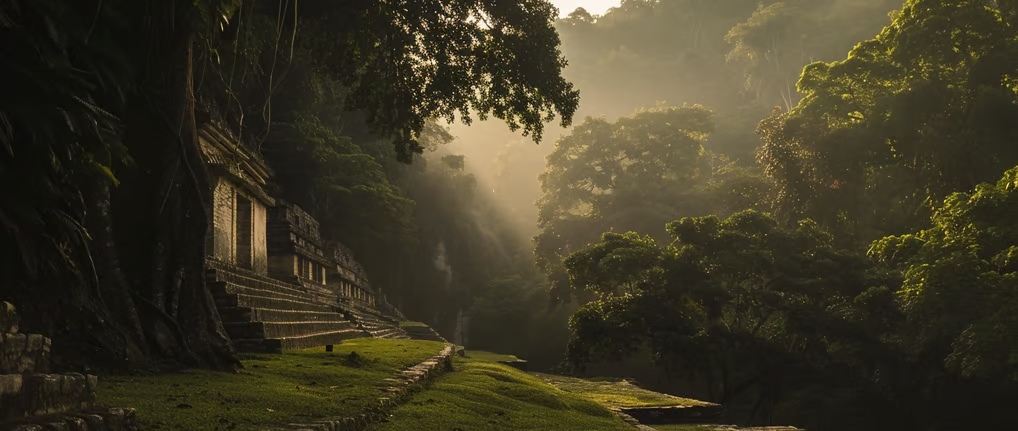Unveiling the Mysteries of Ancient Mayan Civilization
Embark on a journey back in time to unveil the mysteries of the ancient Mayan civilization, exploring majestic ruins, deciphering hieroglyphics, and discovering the advanced cultural and scientific achievements of this enigmatic society.

Welcome, fellow explorers, to the fascinating world of the ancient Mayan civilization! In this article, we will embark on a journey to understand the origins, achievements, religion, and ultimate decline of one of history's most enigmatic societies. So grab your machetes, put on your explorer hats, and let's dive into the captivating realm of the Mayans!
Understanding the Mayan Civilization
The Origins of the Mayans
The Mayan civilization traces its roots back to the Mesoamerican region, encompassing parts of present-day Mexico, Guatemala, Belize, Honduras, and El Salvador. With a history spanning over 4,000 years, the Mayans built a complex and advanced society that left an indelible mark on the world.
The Mayan Social Structure
At the heart of Mayan society lay an intricate social structure. At its pinnacle were the ruling elites, consisting of powerful kings and noble families, who governed the various city-states and were revered for their divine connection. Below them were a class of skilled artisans, farmers, and traders who contributed to the flourishing of the Mayan civilization.
The Mayan Economy
The Mayans were adept at harnessing the bounties of their environment. Agriculture played a vital role in their economy, with maize being the most important crop. They established extensive trade networks, enabling the exchange of valuable goods such as jade, obsidian, cacao, and vibrant feathers. This economic prosperity fueled their civilization's growth and cultural achievements.
One of the fascinating aspects of the Mayan economy was their sophisticated system of currency. The Mayans used a combination of barter and a unique form of money called cacao beans. These beans were highly valued and used as a medium of exchange for goods and services. The Mayans even had specialized traders known as "cacao merchants" who facilitated the trade of cacao beans across the region.
Furthermore, the Mayans were skilled astronomers and mathematicians, which greatly influenced their economic practices. They developed a complex calendar system based on astronomical observations, allowing them to accurately predict the best time for planting and harvesting crops. This knowledge not only ensured food security but also enabled the Mayans to engage in long-distance trade, as they could calculate the most favorable times for travel.

The Mayan Achievements
Mayan Architecture and Infrastructure
Prepare to be awed by the magnificent Mayan architecture! The Mayans erected massive temples, pyramids, and ceremonial centers that still stand today, testaments to their engineering prowess. Places like the Tikal and Chichen Itza reveal the grandeur and ingenuity of Mayan construction.
Let's delve deeper into the fascinating world of Mayan architecture. The Mayans not only built impressive structures, but they also incorporated intricate carvings and sculptures into their designs. These intricate details depicted scenes from mythology, historical events, and everyday life, providing a glimpse into the rich cultural tapestry of the Mayan civilization.
Furthermore, the Mayans were masters of urban planning. Their cities were carefully laid out, with well-defined streets, plazas, and residential areas. They even had advanced water management systems, including reservoirs and canals, that allowed them to thrive in the challenging Mesoamerican environment.
The Mayan Writing System
Unlike any other Mesoamerican civilization, the Mayans developed a complex hieroglyphic writing system. Inscribe your name in history as we unravel the mysteries of their glyphs and their contribution to understanding Mayan culture and history.
The Mayan writing system was not only used for recording historical events but also for religious and ceremonial purposes. It was a means of communication that connected the Mayan people to their gods and ancestors. Each glyph represented a syllable or a word, and the combination of these glyphs created a written language that was both beautiful and intricate.
Deciphering the Mayan hieroglyphs has been a monumental task for scholars, but through their efforts, we have gained invaluable insights into the beliefs, rituals, and daily life of the Mayan civilization. Join us on a journey of discovery as we explore the fascinating world of Mayan writing.
Mayan Astronomy and Calendar System
Look up at the night sky and join the Mayans in their astronomical observations. The Mayans created a sophisticated calendar system that tracked celestial events with remarkable precision. Explore their celestial knowledge and the significance of their calendars in their daily lives.
But the Mayan fascination with astronomy went beyond mere observation. They believed that celestial bodies, such as the sun, moon, and planets, held immense power and influence over their lives. By studying the movements of these celestial bodies, the Mayans were able to predict important events, such as eclipses and the changing of seasons.
In addition to their calendar system, the Mayans also built impressive observatories to study the stars. These structures were carefully aligned with specific celestial events, allowing the Mayans to make accurate astronomical calculations. The knowledge gained from their observations was not only used for practical purposes but also played a significant role in their religious and cultural practices.
The Mayan Religion and Cosmology
The Mayan Pantheon
Journey into the realm of gods and goddesses worshiped by the Mayans. Meet ancient deities like Itzamna, the supreme god of creation, and Ix Chel, the goddess of the moon and fertility. Discover the rich mythologies and spiritual beliefs that shaped their religious practices.
Mayan Rituals and Ceremonies
Step into the sacred world of Mayan rituals and ceremonies. Witness the colorful celebrations and perform ancient rituals of offerings and sacrifices. These practices were essential for maintaining harmony between the spiritual and material realms.
The Concept of Afterlife in Mayan Beliefs
Delve into the Mayan concept of the afterlife, a realm of awe and mystery. Learn about their beliefs in the existence of Xibalba, the underworld, and the rituals conducted to guide souls to their final resting place. Explore the intricate connection between life, death, and the cosmic cycle in Mayan cosmology.
As you delve deeper into the Mayan religion and cosmology, you will discover the fascinating stories behind the deities worshipped by this ancient civilization. Itzamna, the supreme god of creation, was believed to have created the world and all living beings. His wisdom and power were revered by the Mayans, who saw him as the ultimate source of life and knowledge.
Another significant deity in the Mayan pantheon is Ix Chel, the goddess of the moon and fertility. She was associated with the cycles of the moon and the growth of crops, making her a vital figure in the agricultural practices of the Mayans. It was believed that Ix Chel had the power to grant fertility to women and ensure the prosperity of the community.
Mayan rituals and ceremonies were an integral part of their religious practices, serving as a means to connect with the divine and maintain harmony in the world. These rituals were colorful and vibrant, often accompanied by music, dance, and elaborate costumes. The Mayans performed offerings and sacrifices to appease the gods and ensure their favor, believing that this would bring prosperity and protection to their communities.
One of the most intriguing aspects of Mayan beliefs is their concept of the afterlife. According to their cosmology, the souls of the deceased would journey to Xibalba, the underworld. This realm was seen as a place of tests and challenges, where the souls would face trials to determine their fate. Mayan rituals and ceremonies were conducted to guide the souls through this treacherous journey and ensure their safe passage to the final resting place.
The Mayans saw life, death, and the cosmic cycle as interconnected and cyclical. They believed that the actions and rituals performed in the material world had a direct impact on the spiritual realm and vice versa. This intricate connection between the physical and spiritual realms shaped their religious practices and influenced every aspect of their lives.

The Decline of the Mayan Civilization
Theories Behind the Mayan Collapse
Discover the many theories surrounding the decline of the Mayan civilization. Was it due to drought, warfare, disease, or a combination of factors? Unravel the mysteries and controversies that still surround this ancient collapse.
The Impact of Spanish Conquest
The arrival of the Spanish conquistadors in the 16th century marked a turning point in Mayan history. Explore the turbulent clash between the Mayans and the Spanish, the devastation wrought upon their society, and the lasting effects on their culture.
The Legacy of the Mayan Civilization
Although the ancient Mayan civilization ceased to exist as a dominant force, its influence lingers on. From its architectural marvels to its complex calendar system, the Mayans have left an indelible mark. Discover how their legacy continues to fascinate and inspire people from all walks of life.
Uncover The Wonders of Mayan Civilization
As we conclude our journey through the annals of the ancient Mayan civilization, let us not forget the invaluable lessons we've learned. The Mayans were visionary architects, skillful astronomers, and seekers of spiritual truths. We stand in awe of their cultural achievements, even as we ponder the mysteries that still shroud their history. So let's carry the legacy of the Mayans with us and continue to explore the wonders of our world.
Are you ready to embark on your own Mayan adventure? Book your tickets to the Mesoamerican heartland today and immerse yourself in the fascinating world of the ancient Maya. Let the echoes of their civilization guide you through the ancient ruins, and be prepared to be truly captivated by the wonders that await you!